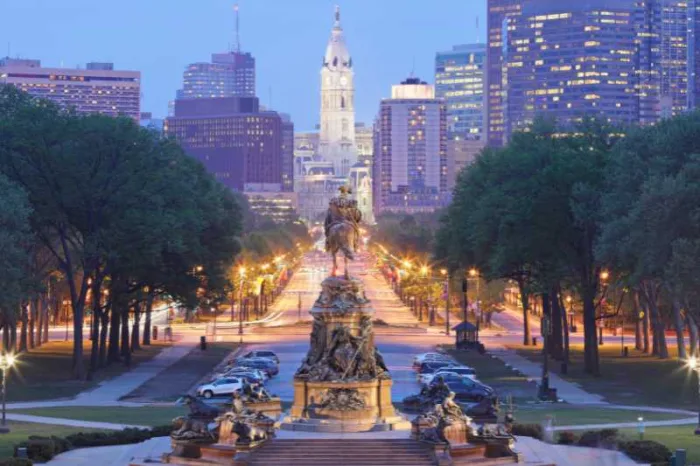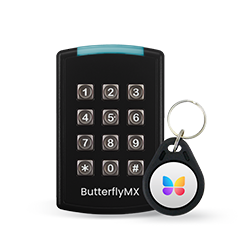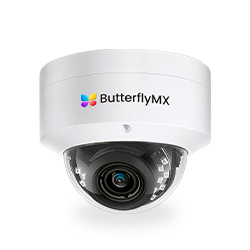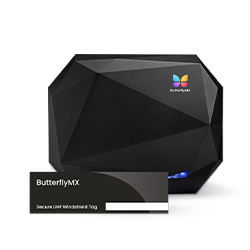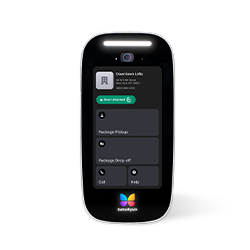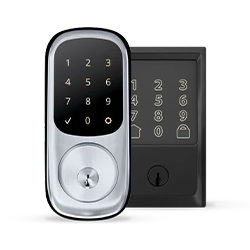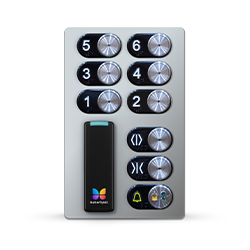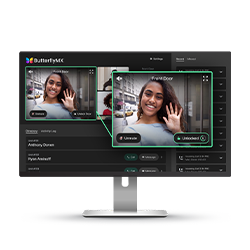Key takeaways
- Package rooms offer greater flexibility than lockers, accommodating all package sizes and high delivery volumes.
- Smart parcel lockers provide automation and 24/7 self-service, but can be limited by fixed compartment sizes.
- Choosing the right system depends on building layout, space availability, and delivery volume.
- Security and system integration are essential for protecting packages and streamlining operations.
- Hybrid solutions combining lockers and package rooms can balance efficiency, convenience, and scalability.
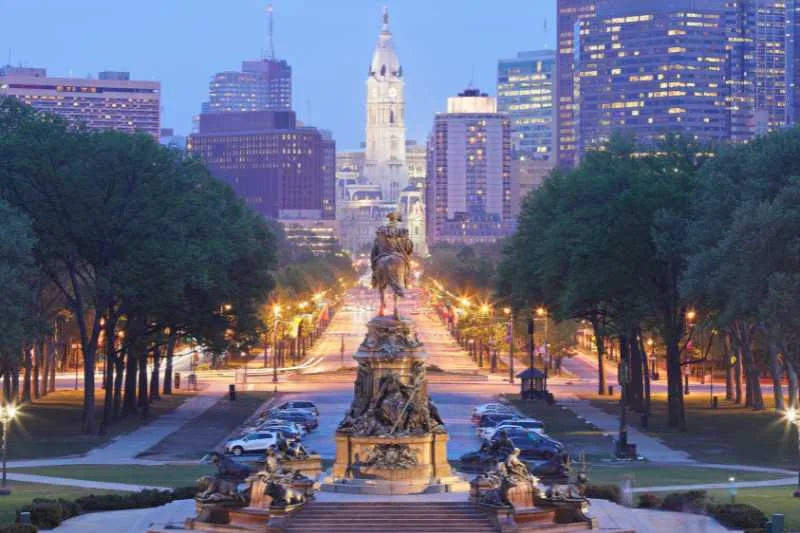
Online shopping has surged in Philadelphia, and with it comes a flood of daily deliveries to multifamily buildings. For property managers, the challenge isn’t just handling volume but doing so securely, efficiently, and without overwhelming staff. The solution often comes down to whether a building installs a package locker system in Philadelphia or sets up a package room with a package receiving service.
In this guide, we’ll compare package lockers for apartment buildings to package rooms, examine their benefits and drawbacks, and provide guidance on selecting the right setup for Philadelphia properties.
Navigate this post:
- What is a package locker?
- Why property managers care about package locker systems in Philadelphia
- Package locker pros and cons
- Package locker vs. package room
- What to consider when purchasing a package delivery system
- 6 reasons to choose the ButterflyMX Package Room system
- Package locker systems in Philadelphia FAQs
More than 40K, 5-star reviews!

Video Intercoms
Open doors, gates & garages from anywhere.

QR Code Intercom
Smartphone-based visitor access.
Access Control
Fob, key cards, PINs, and mobile apps.
Security Cameras
Visibility throughout your property.
Vehicle Access
Hands-free access for gates & garages.
Package Room
Receive, store, and manage deliveries.
Smart Locks
Connect to all major brands and models.
Elevator Controls
Unlock key-fobbed elevators for anyone.
Front Desk Station
See all your doors and cameras in one place.
What is a package delivery system?
A package locker is a secure, automated storage system designed to hold deliveries until the recipient is ready to collect them. You’ll most often find them in apartment buildings, offices, or retail locations where multiple packages arrive daily.
Two types of package lockers include:
- Smart parcel lockers. These lockers are equipped with software that generates unique codes or QR codes for each delivery, giving residents secure, 24/7 access to their packages. They often integrate with property management platforms, allowing managers to monitor usage and track delivery activity in real time.
- Indoor or outdoor lockers. Indoor lockers are typically installed in lobbies or mailrooms, providing a climate-controlled and secure environment for package storage. Outdoor lockers are built with weather-resistant materials and are ideal for garden-style apartment communities or properties with limited indoor space.
- Package rooms. Lastly, a package room is a dedicated, secure space where deliveries are stored until residents retrieve them. Package rooms can be staffed or monitored remotely and are particularly useful for handling oversized or irregularly shaped packages that won’t fit in standard lockers. They allow for flexible storage arrangements and can accommodate high delivery volumes, making them a key solution for buildings with limited locker space or high package traffic.
Discover how ButterflyMX Access Control works:
Why property managers in Philly care about package delivery systems
For property managers in Philadelphia, package delivery efficiency is a top priority. Buildings that receive dozens or even hundreds of packages each day can quickly overwhelm staff, create cluttered lobbies, and slow down other operational tasks. A package locker system in Philadelphia helps streamline this process by automating deliveries, reducing the need for staff to track, sort, and distribute packages manually.
By implementing parcel lockers or apartment parcel lockers, managers can free up staff time for other building operations while maintaining a secure, organized system for residents. What’s more, packages are stored in designated compartments or secure areas, reducing lost or misplaced packages and minimizing front-desk congestion. Additionally, for buildings with limited space, lockers make efficient use of lobbies or common areas, while package rooms can centralize deliveries in one manageable location.
Package locker pros and cons
When evaluating a package locker system in Philadelphia, it’s important to understand both the benefits and potential drawbacks. Smart lockers can streamline deliveries, improve security, and enhance resident convenience; however, they also come with limitations, such as fixed compartment sizes and space requirements. Below is a closer look at the pros and cons of using package lockers in multifamily buildings.
Pros
- Automation. Couriers can drop packages directly into lockers with minimal staff involvement. This reduces front-desk workload and frees staff to focus on other building operations, which is especially valuable in properties with high delivery volumes.
- 24/7 pickup. Residents can access their deliveries at any time, providing maximum convenience and flexibility. This is particularly beneficial in urban markets like Philadelphia, where residents often have varying work schedules.
- Security. Individual compartments with PIN-protected or QR code access help prevent theft and misplaced packages. Each resident only accesses their assigned compartment, providing a higher level of security than unsecured lobby deliveries.
- Marketing feature. Package lockers serve as a modern amenity that can attract prospective renters. Offering automated package handling signals a tech-forward, convenient living experience, which can give a building a competitive edge.
Cons
- Fixed size. Standard lockers may not accommodate oversized or irregularly shaped packages, requiring alternative storage solutions for larger items.
- Overflow issues. During peak delivery periods, lockers can fill up quickly, leaving couriers with no place to store additional packages. Overflow management becomes a concern, especially in high-volume buildings.
- Cost. Installing a package locker system in Philadelphia involves upfront capital investment and ongoing software and maintenance fees. For smaller properties, this can be a significant consideration.
- Space limits. Many older or historic Philadelphia buildings may lack sufficient lobby or common-area space to install a large locker system, limiting its practicality.
- Courier compliance. If lockers are full or inaccessible, couriers may leave packages at the front desk or other unsecured areas, undermining the security benefits of the system.
Package locker vs. package room
When deciding how to manage deliveries in multifamily buildings, property managers often weigh the benefits of smart parcel lockers against a package room, such as the ButterflyMX Package Room. While both solutions have their advantages, package rooms frequently provide a more flexible and practical option, especially in Philadelphia’s diverse building stock.
Package lockers offer automation, 24/7 self-service access, and secure compartments, making them ideal for small parcels and tech-forward amenities. However, they come with limitations: fixed compartment sizes, potential overflow during peak periods, space requirements, and significant upfront costs. Furthermore, older buildings or those with narrow lobbies may struggle to accommodate a full locker system, and oversized or irregular packages often cannot be stored in standard lockers.
What’s more, package rooms offer unmatched flexibility, and they can store parcels of all sizes without worrying about compartment constraints. Shelving and layout can be adjusted as package volume grows, making them scalable for both small and high-volume buildings. Additionally, converting an existing room is often more cost-effective than installing lockers, and couriers can drop multiple packages at once, streamlining operations and reducing delivery bottlenecks.
Comparing package lockers and package rooms:
What to consider when purchasing a package delivery system
Choosing the right package delivery system is an important decision for multifamily property managers. For instance, factors like building layout, delivery volume, resident expectations, and security needs all play a role in determining the best fit for your property:
- Building age and layout
- Available space
- Delivery volume
- Resident expectations
- Cost vs. ROI
- System integration
- Security needs
Building age and layout
Philadelphia’s multifamily buildings vary widely, from historic rowhouses to modern high-rises. As such, older properties may have narrow lobbies, limited common areas, or unusual layouts that make installing a full package locker system in Philadelphia challenging. Understanding the building’s footprint is critical to choosing a solution that fits without disrupting resident flow.
Available space
Assess how much space is available for package storage. Some buildings have unused rooms that can be converted into a package room, while others may only have a small lobby or corridor where lockers could be installed. What’s more, matching the delivery system to the available footprint ensures efficiency and prevents congestion.
Delivery volume
Consider the number of daily packages your building receives. High-rise or high-density properties may require a dedicated package room to handle large volumes and oversized items. Smaller buildings with moderate deliveries may find apartment parcel lockers sufficient for automation and self-service.
Resident expectations
Urban renters often expect convenience and flexibility, including 24/7 access to their deliveries. As such, smart lockers provide self-service pickup at any time, while package rooms may require scheduled access or staffing. Knowing your residents’ preferences will help determine which system best meets their needs.
Cost vs. ROI
Evaluate both upfront and ongoing costs. Installing smart parcel lockers involves hardware, software, and maintenance fees, whereas a package room can often be created by repurposing existing space at a lower cost. Factor in potential savings in staff time and improved resident satisfaction when calculating return on investment.
System integration
Check for compatibility with your property’s existing technologies, such as intercoms, access control systems, or property management software. A system that integrates seamlessly can simplify operations, improve security, and provide real-time package tracking for residents and staff.
Security needs
Security is a top concern in urban areas like Philadelphia. Package rooms require strong locks, cameras, and sometimes staff oversight, while smart lockers use PIN codes or QR codes for compartment-level security. Evaluate the risk of theft and select a system that protects both residents and packages effectively.
6 reasons to choose the ButterflyMX Package Room system
Managing package deliveries efficiently is crucial for multifamily properties, especially in urban areas like Philadelphia, where delivery volumes are high and space can be limited. The ButterflyMX Package Room system offers a comprehensive solution that combines security, convenience, and scalability.
- Seamless access. The system utilizes the Video Intercom, allowing couriers to securely access the Package Room using unique delivery PINs or delivery passes. This ensures that only authorized personnel can drop off packages, reducing the risk of theft or unauthorized access.
- 24/7 resident pickup. Residents are notified through the ButterflyMX mobile app when packages arrive. Additionally, they can access the Package Room at any time using a secure code, providing flexibility for varying schedules and reducing missed deliveries.
- Enhanced security features. Each entry into the package room is recorded with a time- and date-stamped photo, creating an audit trail for both deliveries and pickups. This adds accountability and ensures packages are handled securely.
- Scalability and flexibility. The ButterflyMX Package Room accommodates packages of all sizes, making it suitable for buildings with diverse delivery needs. The system is designed to grow with your property, keeping pace with increasing delivery volumes.
- Cost-effective solution. Automating package delivery reduces staff involvement, saving time and labor costs. This makes the ButterflyMX Package Room a cost-effective choice for property managers.
- Easy integration. The system works seamlessly with existing property management software and access control systems, simplifying operations and minimizing the complexity of managing multiple platforms.
Package locker systems in Philadelphia FAQs
- What is the cost to install a parcel locker system vs. maintaining a package room?
- How secure are smart parcel lockers vs. package rooms?
- Can both lockers and rooms support 24/7 resident access?
What is the cost to install a parcel locker system vs. maintaining a package room?
Smart lockers require upfront investment in hardware and ongoing software fees, while package rooms simply require access control, shelving, and optional staffing.
How secure are smart parcel lockers vs. package rooms?
Both can be secure when integrated with access control and surveillance. What’s more, lockers provide compartment-level security, while package rooms depend on controlled entry and monitoring.
Can both lockers and rooms support 24/7 resident access?
Yes, as long as access control systems allow residents to enter the room or locker area at all times.

Get your free quote!
Fill in the form below, and we'll email you right back.
Want a free quote?
Fill in the form below, and we'll email you right back.
You’ll be redirected shortly...
